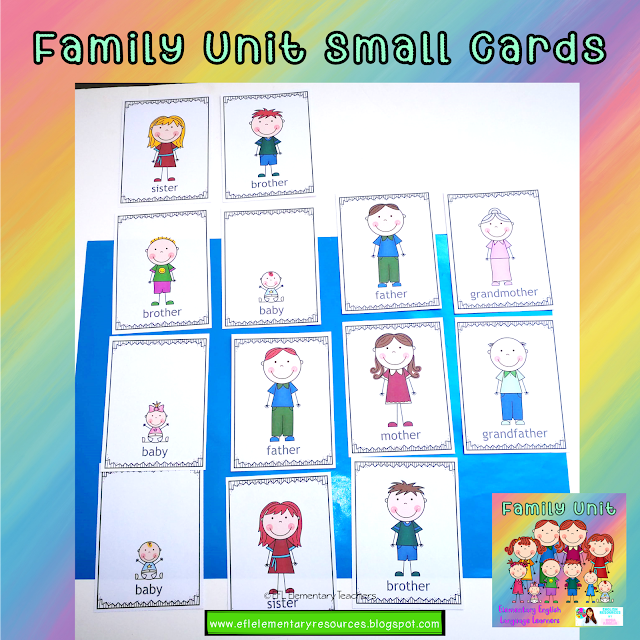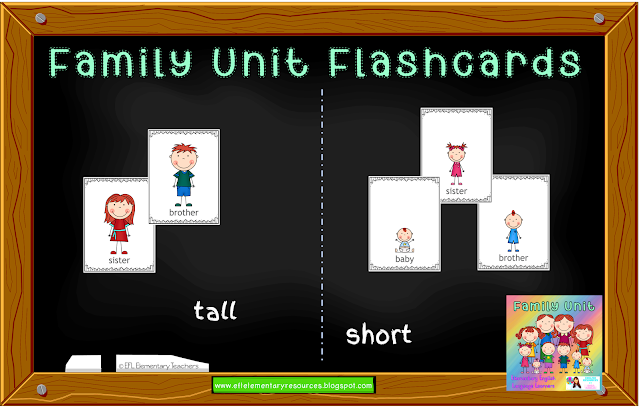This resource is included in the Family Unit for Elementary English Language Learners-Starters. First grade and ELL Teacher can find this material useful.
Click here: https://www.teacherspayteachers.com/Product/Family-Activities-for-Elementary-ELL-1804475
Develop
all the confidence needed to be a successful English Language learner. The small cards are helpful to identify family members and other people.
Use the family unit small cards to create an
opportunity for your students to extend the vocabulary learned as they
organized the cards alphabetically. You might have taught the letter names by
now.
If not, show them how to put the family words into alphabetical order and
say them as they make a line with the cards.
Use the family unit small cards for personalisation of the new vocabulary. Have your students express their own opinion on the text as they describe their mother or any other significant people for them that you assign.
Do this color code spelling activity.
Students will choose a color for the vowels and another one for the consonants.
Have them write the words accordingly. Have them notice that there is a pattern
in the ending of these words: father, mother, brother, grandmother and grandfather.
Students
will have to start their thinking and categorizing skills to sort the family
members cards by hair color.
Create families. Students will use their reasoning and their problem- solving skills as they classify and organize the people into families. Have them explain their grouping.
Use this tic tac toe game to review grammar points. This kind of games foster communication. Prepare your board game with the printables provided in the resource. It can also be played on the board. One team can be x or o. Place the family members small cards on the spaces on the game. The first team will choose a person on a square and make a correct sentence using the chosen family member. It can be This is Mother/ Mother has blonde hair/
If the
sentence is correct, the team will place the X or O on
that square and take away that family member. If the sentence is incorrect, the
family member will still play on the board.
The first team to make three X
or O in a horizontal, vertical
or diagonal row will be the winner team.

Follow me at my other blog for Kindergarten English Language Learners, there is also a family unit for you to check! www.eflpreschoolteachers.blogspot.com
















.png)






























